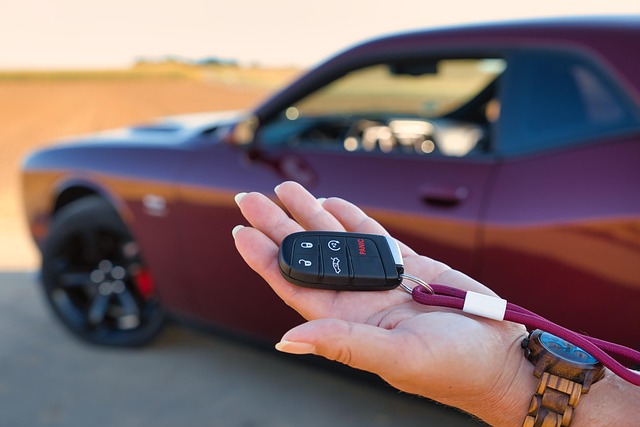Registering a car in California is a straightforward process, but understanding the requirements is key. This guide walks you through the steps to ensure a smooth experience. From gathering essential documents like proof of insurance and ownership to verifying your vehicle’s VIN (using a reliable VIN verifier), each stage is crucial. Discover approved registration locations and complete your application with ease. By following these steps, you’ll be on your way to legally registering your car in California promptly.
- Understand California Car Registration Requirements
- Gather Necessary Documents for Car Registration
- Choose an Approved Vehicle Registration Location
- Complete and Submit Your Vehicle Registration Application
- Verify Your Vehicle's VIN (Vehicle Identification Number)
Understand California Car Registration Requirements

Before registering your car in California, it’s essential to understand the state’s requirements. One key aspect is ensuring your vehicle has a valid and accurate Vehicle Identification Number (VIN) verifier, often referred to as a VIN inspection. This process verifies the authenticity of your car’s details, including its make, model, year, and specifications. In California, this verification can be conducted through a mobile vin verification service, providing convenience for drivers who prefer an on-demand, in-person inspection.
During registration, you’ll also need to present essential documents such as proof of ownership, current vehicle insurance, and possibly a smog certificate if your car is over a certain age. It’s crucial to check with the California Department of Motor Vehicles (DMV) for specific guidelines and any additional requirements that may apply based on your vehicle type or age. A mobile vin inspection can streamline this process, as it allows for quick and accurate verification of your car’s history right at the DMV or wherever you choose.
Gather Necessary Documents for Car Registration

Before you begin the registration process, ensure you have all the essential documents required by the California Department of Motor Vehicles (DMV). The primary document needed is the Vehicle Identification Number (VIN) verifier, which can be obtained through a mobile VIN verification service or a physical inspection at an authorized location. This step is crucial as it verifies the vehicle’s history and ensures it meets safety standards.
Additionally, you’ll need proof of ownership, typically in the form of a title document or a bill of sale. A valid driver’s license or ID card for each owner is essential, along with any applicable fees for registration and registration plate costs. It’s recommended to check the DMV’s website for a comprehensive list of required documents to streamline the car registration process in California.
Choose an Approved Vehicle Registration Location

When registering your car in California, choosing an approved Vehicle Registration Location is a crucial step. These locations are equipped to handle all necessary paperwork and inspections, ensuring a smooth process for vehicle owners. You can opt for traditional DMV offices or explore convenient alternatives like mobile vin verification services, which offer on-site or remote vin inspection for added flexibility.
Approved registration sites prioritize efficiency and accuracy in every transaction. They utilize advanced technology, such as VIN (Vehicle Identification Number) verifiers, to validate vehicle details swiftly. With the help of these tools, combined with the expertise of trained staff, you can expect a hassle-free car registration experience regardless of your chosen location or service method, whether it’s a mobile vin verifier or a traditional DMV visit.
Complete and Submit Your Vehicle Registration Application

To register your car in California, the first step is to complete and submit your Vehicle Registration Application. This form requires essential details about your vehicle, including its make, model, year, and unique VIN (Vehicle Identification Number). The VIN is a crucial piece of information used for accurate identification and verification, so ensure it’s entered correctly. A vin verifier or vin inspection can help cross-check this number to avoid any errors.
You can obtain the application from the California Department of Motor Vehicles (DMV) website or in person at a local DMV office. Fill out the form completely and accurately, double-checking your work. Once you’ve finished, submit it along with the required fees, which may vary depending on your vehicle’s type and age. Consider opting for a mobile vin verification service to simplify the process further, ensuring a smoother registration experience.
Verify Your Vehicle's VIN (Vehicle Identification Number)

Before you begin the registration process, it’s crucial to ensure your vehicle’s Vehicle Identification Number (VIN) is accurate and verified. This unique 17-character code serves as a digital fingerprint for your car, making it an essential step in the registration procedure. You can easily verify your VIN through various methods, including mobile vin verification services that offer convenient and quick inspections.
By utilizing a mobile vin verifier, you can cross-reference the number against reliable databases to confirm its authenticity. This step is vital as an incorrect or manipulated VIN may lead to registration denials or future legal issues. Ensure your vehicle’s information is correct before proceeding with the California car registration process.
Registering a car in California involves understanding state requirements, gathering essential documents, choosing an approved location, completing applications, and verifying your vehicle’s VIN. By following these steps and utilizing tools like a VIN verifier, you can ensure a smooth process, ensuring your vehicle is legally registered and ready to hit the road.
